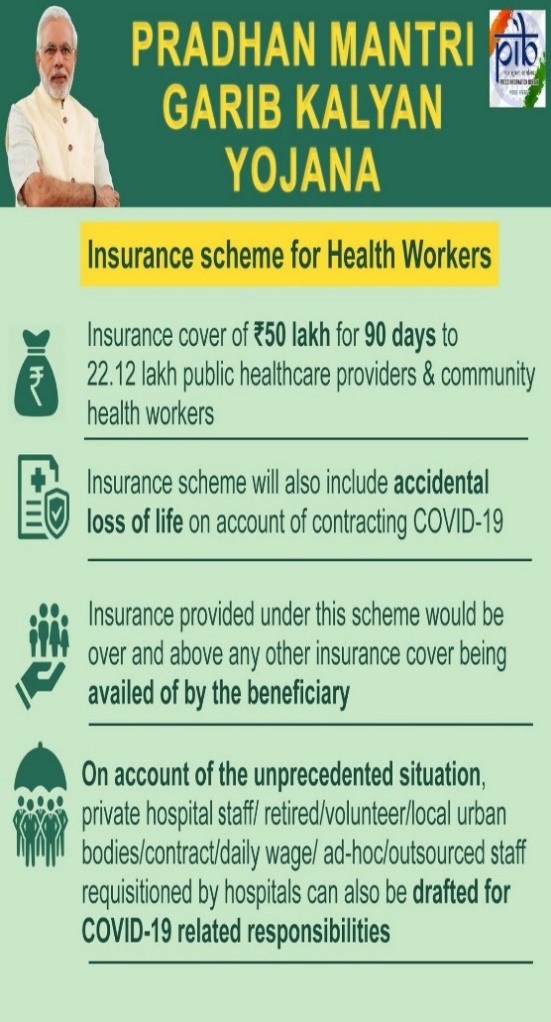26th April 2020 Current Affairs in English from The Hindu Newspaper

26th April 2020 Current Affairs in English – Today Current affairs PDF link available below.
Dear Aspirants, we (Vetripadi.com team) have come with Daily Current affairs analysis. It is prepared to crack the various competitive exams. We are here to make sure your preparation easy. We will update the current affairs every day. It will help for both preliminary and mains (facts oriented with background information) for your preparation. We need you support.
VETRIPADI Daily Newsletter
வெற்றிப்படி.காம் | வெற்றிக்கு நீ படி!!!
Daily Current affairs for Competitive
Exams ( UPSC, TNPSC, SSC)
26th APRIL 2020
TABLE OF CONTENTS
- Coronavirus lockdown | BRO opens Rohtang Pass 3 weeks in advance
2. Important Schemes and Instituution In News
- Pradhan Mantri Garib Kalyan Yojana Relief Package
- Pradhan Mantri Garib Kalyan Yojana
- National Agricultural Cooperative Marketing Federation (NAFED)
- The Financial Stability and Development Council (FSDC)
3. Environment, Science and Technology
- Sewage surveillance can estimate coronavirus spread in the community
- Coronavirus spares no major organ in the body
- Stop villainising bats, say scientists and conservationists
- First merger of two black holes with unequal masses detected
1. Coronavirus lockdown | BRO opens Rohtang Pass 3 weeks in advance
Information in News
- The Border Roads Organisation (BRO) on Saturday opened the Rohtang Pass, three weeks in advance, for transporting essential supplies and relief materials to the Lahaul and Spiti districts of Himachal Pradesh amid the lockdown, the Army said.
- The pass is at 13,058 feet on the eastern Pir Panjal Range of the Himalayas.
- The valley depends on air traffic for external logistics and supplies during winters.

Rohtang Pass
- Rohtang Pass is located in the state of Himachal Pradesh.
- It is present on the Pir Panjal Range of Himalayas.
- It connects the Kullu Valley with Lahaul and Spiti Valleys of Himachal Pradesh.
- The Ravi river rises west of the Rohtang pass in the Kullu hills of Himachal Pradesh.
Prelims point in news
- Kabini backwaters, bordering the Bandipur-Nagarahole belt.
- Even in the video -conferencing, the decorum of the court is required to be maintained. The Advocates Act provides for lawyers to wear their uniform while pleading the case for their clients, the judge observed in his brief order.
- In 1918, H1N1 (commonly referred to as Spanish Flu) pandemic and what measures were taken to boost the economy after the pandemic had run its course, leaving more than 12-17 million people dead in the country.

2. Important Schemes and Instituution In News
1. Pradhan Mantri Garib Kalyan Yojana Relief Package
Information in News
Finance Minister announces Rs 1.70 Lakh Crore relief package under Pradhan Mantri Garib Kalyan Yojana for the poor to help them fight the battle against Corona Virus
- Insurance cover of Rs 50 Lakh per health worker fighting COVID-19 to be provided under Insurance Scheme
- 80 crore National Food Security Act beneficiaries poor people will to get 5 kg wheat or rice and 1 kg of preferred pulses for free every month for the next three months
- 20 crore women Jan Dhan account holders to get Rs 500 per month for next three months
- Increase in MNREGA wage to Rs 202 a day from Rs 182 to benefit 13.62 crore families
- An ex-gratia of Rs 1,000 to 3 crore poor senior citizen, poor widows and poor disabled
- Government to front-load Rs 2,000 paid to farmers in first week of April under existing PM Kisan Yojana to benefit 8.7 crore farmers
- Central Government has given orders to State Governments to use Building and Construction Workers Welfare Fund to provide relief to Construction Workers.

2. Pradhan Mantri Garib Kalyan Yojana
- The Pradhan Mantri Garib Kalyan Yojana (PMGKY) is Union Government’s second income disclosure scheme (IDS) to allow tax evaders to come clean with unaccounted wealth.
- (PMGKY) notified along with other provisions of Taxation Laws (Second Amendment) Act, 2016 came into effect from 17 December 2016 and it will remain open until 31 March, 2017.
- It provides for 50% tax and surcharge on declarations of unaccounted cash deposited in banks.
- The recently launched Garib Kalyan yojana, is similar to Income tax declaration scheme, however there are few differences.
- Under this scheme, tax rate will be higher and the declared income.
- The declarant under this regime shall be required to pay tax @ 30% of the undisclosed income, and penalty @10% of the undisclosed income.
- Further, a surcharge to be called ‘Pradhan Mantri Garib Kalyan Cess’ @33% of tax is also proposed to be levied.
- In addition to tax, surcharge and penalty (totaling to approximately 50%), the declarant shall have to deposit 25% of undisclosed income in a Deposit Scheme which will be refunded only after 4 years without any interest to be notified by the RBI under the ‘Pradhan Mantri Garib Kalyan Deposit Scheme, 2016’.
- This amount is proposed to be utilised for the schemes of irrigation, housing, toilets, infrastructure, primary education, primary health, livelihood, etc., so that there is justice and equality.

3. National Agricultural Cooperative Marketing Federation (NAFED)
- The National Agricultural Cooperative Marketing Federation is the nodal agency which procures and stores a buffer stock of pulses.
- National Agricultural Cooperative Marketing Federation of India Ltd.(NAFED) was established on the auspicious day of Gandhi Jayanti on 2nd October 1958.
- Nafed is registered under the Multi State Co-operative Societies Act 1984.
- Nafed was setup with the object to promote Co-operative marketing of agricultural produce to benefit the farmers.
- Agricultural farmers are the main members of Nafed, who have the authority to say in the form of members of the General Body in the working of Nafed.
- NAFED is the nodal agency to implement price stabilization measures under “Operation Greens” which aims to double the farmers’ income by 2022.
- It functions under Ministry of Agriculture.
- NAFED along with FCI with proactive role of state governments also physically procures oilseeds, pulses and copra under the Price Support Scheme (PSS) which in turn is under the umbrella scheme of PM-AASHA.
- In 2008, it established, National Spot Exchange, a Commodities exchange as a joint venture of Financial Technologies (India) Ltd. (FTIL).
- NAFED is now one of the largest procurement as well as marketing agencies for agricultural products in India.
- With its headquarters in New Delhi, NAFED has four regional offices at Delhi, Mumbai, Chennai and Kolkata, apart from 28 zonal offices in capitals of states and important cities.
- The objectives of the NAFED shall be to organize, promote and develop marketing, processing and storage of agricultural, horticultural and forest produce, distribution of agricultural machinery, implements and other inputs, undertake inter-state, import and export trade, wholesale or retail as the case may be and to act and assist for technical advice in agricultural, production for the promotion and the working of its members, partners, associates and cooperative marketing, processing and supply societies in India.
4. The Financial Stability and Development Council (FSDC)
- The Financial Stability and Development Council (FSDC) has been constituted vide GOI notification dated 30th December, 2010.
- The Council is chaired by the Union Finance Minister and its members are Governor, Reserve Bank of India; Finance Secretary and/or Secretary, Department of Economic Affairs; Secretary, Department of Financial Services; Chief Economic Adviser, Ministry of Finance; Chairman, Securities and Exchange Board of India; Chairman, Insurance Regulatory and Development Authority and Chairman, Pension Fund Regulatory and Development Authority.
- The Council deals, inter-alia, with issues relating to
- financial stability,
- financial sector development,
- Inter–regulatory coordination,
- Financial literacy,
- Financial inclusion and
- Macro prudential supervision of the economy including the functioning of large financial conglomerates.
- No funds are separately allocated to the Council for undertaking its activities.
- The Council and its Sub-Committee (chaired by Governor, Reserve Bank of India) deliberate on agenda items proposed by any of the members of the Council which broadly include matters relating to financial stability, inter-regulatory coordination, and financial sector development. The Council/Sub-committee deliberates on these issues and suggests taking appropriate steps, as required.
3. Environment, Science and Technology
1. Sewage surveillance can estimate coronavirus spread in the community
- Sampling sewage for viral particles is a time-tested method of environment surveillance and is routinely resorted to for understanding circulation of several viruses wild and vaccine-derived polio, rota virus, Hepatitis E and typhoid in the community.
- Now, researchers in France have found that sewage surveillance can help in understanding the circulation of novel coronavirus (SARS-CoV-2) in the human population.
- People infected with the virus have been found to shed the virus in their stools.
- And by studying sewage samples, it is possible to know the viral load in the community through modelling once data on how many viral particles are shed by individuals and how the viral particles get diluted in sewage are available.
- Sewage surveillance becomes particularly useful as a large percentage of infected population is either asymptomatic or show only mild symptoms.
- The environmental surveillance is able to pick up a spike in virus concentration in sewage much before cases show up or overload and strain the healthcare system.
- Environmental surveillance is the key to know and understand community transmission. But one should be clear when to carry out sewage surveillance when cases have come down once the outbreak has been controlled or before cases show up so as to predict an outbreak
- The other benefit is that sewage surveillance can be carried out independent of testing in humans and will be able to pick up early signs even when people in the community do not show symptoms.
- The ability of sewage surveillance to decipher community spread even when people are asymptomatic is akin to antibody testing.
- Viral particles in sewage samples is a collection of virus shed by many people in the community and is akin to pooled testing,” the scientist said. “But sewage sampling is not a replacement to testing for infection in people but is only a supplement.”
2. Coronavirus spares no major organ in the body
- While about 80% of people infected with the virus either don’t display any symptoms or only mild symptoms, the remaining need hospitalisation and about 5% need ICU care.
- The virus enters the cells by binding to receptors found on certain cells called angiotensin-converting enzyme 2 (ACE2). The lining of the nose is rich in cells with this receptor and hence is the site of entry into the body. The receptors are found in cells found in many other organs, thus leaving them too vulnerable.
The lungs
- The tiny air sacs in the lungs called the alveoli, where oxygen exchange between the lungs and blood vessels take place, are rich in ACE2 receptors. Once the virus enters these cells, the immune system mounts an all-out battle against the virus, disrupting the oxygen transfer and leaving the air sacs with fluid and dead cells, which makes breathing shallow and difficult and accompanied with coughing.
- Patients experiencing worsening conditions typically have their immune system overreacting and bringing on a “cytokine storm”, where the level of cytokines far exceed the levels needed resulting in healthy tissues being attacked. “Blood vessels leak, blood pressure drops, clots form, and catastrophic organ failure can ensue,
Blood supply
- Heart is one of the organs that gets affected after lungs. The disruption seems to extend to the blood itself, causing blood clots, which when breaks can restrict the blood supply to the brain causing stroke or artery supplying blood to the lungs causing pulmonary embolism.
- Infection may also lead to blood vessel constriction, causing reduced blood supply to organs. “Some patients have extremely low blood-oxygen levels and yet are not gasping for breath. The oxygen uptake is impeded by constricted blood vessels rather than by clogged alveoli,” the report says. The virus attacking the blood vessels could be one reason why patients with blood pressure, diabetes are at higher risk.
Not at great risk
- Surprisingly, asthmatics or patients with other respiratory diseases are not at great risk unlike those with vascular problems — diabetes, obesity, age, hypertension. Scientists are yet to understand exactly what causes damage to the heart and blood vessels.
- Kidneys too are very vulnerable and experience in China shows that a sizeable fraction of patients may suffer from kidney failure. It could be due to direct infection by the virus, cytokine storms reducing blood supply to the kidneys, or pre-existing diabetes causing fatal damage to kidneys.
- A small subset (5%-10%) of patients suffer from neurological problems — seizure-like symptoms, strokes, loss of sense of smell and taste, and at times even depression of brain stem reflex, which is responsible for sensing oxygen starvation. In rare cases, the virus finds its way into the cerebrospinal fluid causing meningitis and encephalitis.
- “No one knows when or how the virus might penetrate the brain. But one scientist speculates about a possible invasion route: through the nose, then upward and through the olfactory bulb explaining reports of a loss of smell which connects to the brain.
3. Stop villainising bats, say scientists and conservationists
- To raise awareness, 64 chiropterologists (those who study bats) from six South Asian countries have released a document clarifying the myths about bats and strongly affirming that bats do not spread COVID-19.
- They also clarify that the bat coronaviruses (BtCoV) found in two species of Indian bats (in a recent Indian Council of Medical Research study) are not the same as SARS-CoV-2 and cannot cause COVID-19.
- “Human activities and encroaching upon wildlife habitats puts us at risk of encountering new viruses. We need to modify human practices to prevent the emergence of new pathogens.”
- We should remember that all wild animals harbour viruses and it is very biased and unfair to point fingers only at bats. If we keep destroying habitats there are changes of the spread of other viruses from other animals to humans,”
- The researchers and conservationists highlight that bats perform vital ecosystem services such as pollination, pest control, and provide intangible economic benefits.
- They urge the governments of South Asian countries to strengthen the legal framework to protect bats. As only two species (out of 128) are protected by law in India, the researchers ask the government to reconsider and reinforce the laws governing bat conservation.
- The current pandemic is an outcome of the ongoing ecological destruction, increasing intensification of livestock farming and wildlife trade. We request the media to not oversimplify scientific evidence, to emphasise the role of humans in disease outbreaks, and to highlight the importance of coexistence with bats in urban landscapes.
4. First merger of two black holes with unequal masses detected
- For the first time since it started functioning, the gravitational wave observatories at LIGO scientific collaboration have detected a merger of two unequal-mass black holes.
- The event, dubbed GW190412, was detected nearly a year ago, and this is almost five years after the first ever detection of gravitational wave signals by these powerful detectors.
- Subsequent analysis of the signal coming from the violent merger showed that it involved two black holes of unequal masses coalescing, one of which was some 30 times the mass of the Sun and the other which had a mass nearly 8 times the solar mass.
- The actual merger took place at a distance of 2.5 billion light years away.
- The detected signal’s waveform has special extra features in it when it corresponds to the merger of two unequal-sized black holes as compared with a merger of equal-sized black holes.
- These features make it possible to infer many more things about the characters in this celestial drama, namely, a more accurate determination of the distance from the event, the spin or angular momentum of the more massive black hole and the orientation of the whole event with respect to viewers on Earth.
- While the mass of the black hole bends the space-time close to it, the spin or angular momentum of this inscrutable object drags the nearby space-time, causing it to swirl around, along with it. Hence both these properties are important to estimate.
Binary blackholes of equal masses and unequal masses
Equal Masses
- Dominant emission of gravitational waves happens at twice the orbital frequency of the binary blackholes of equal masses.This emission is negligible when binaries contain equal masses.
Unequal Masses
- Dominant emission at a frequency that is three times the orbital frequency. Also, in the case of the merger of unequal black holes, the spin of the more massive black hole can be determined from the extra features in the signal waveform. “The spin of the heavier black hole plays a more prominent role in the dynamics of the binary. Hence, it leaves a stronger imprint on the waveform, making it easy to measure.
Reference






